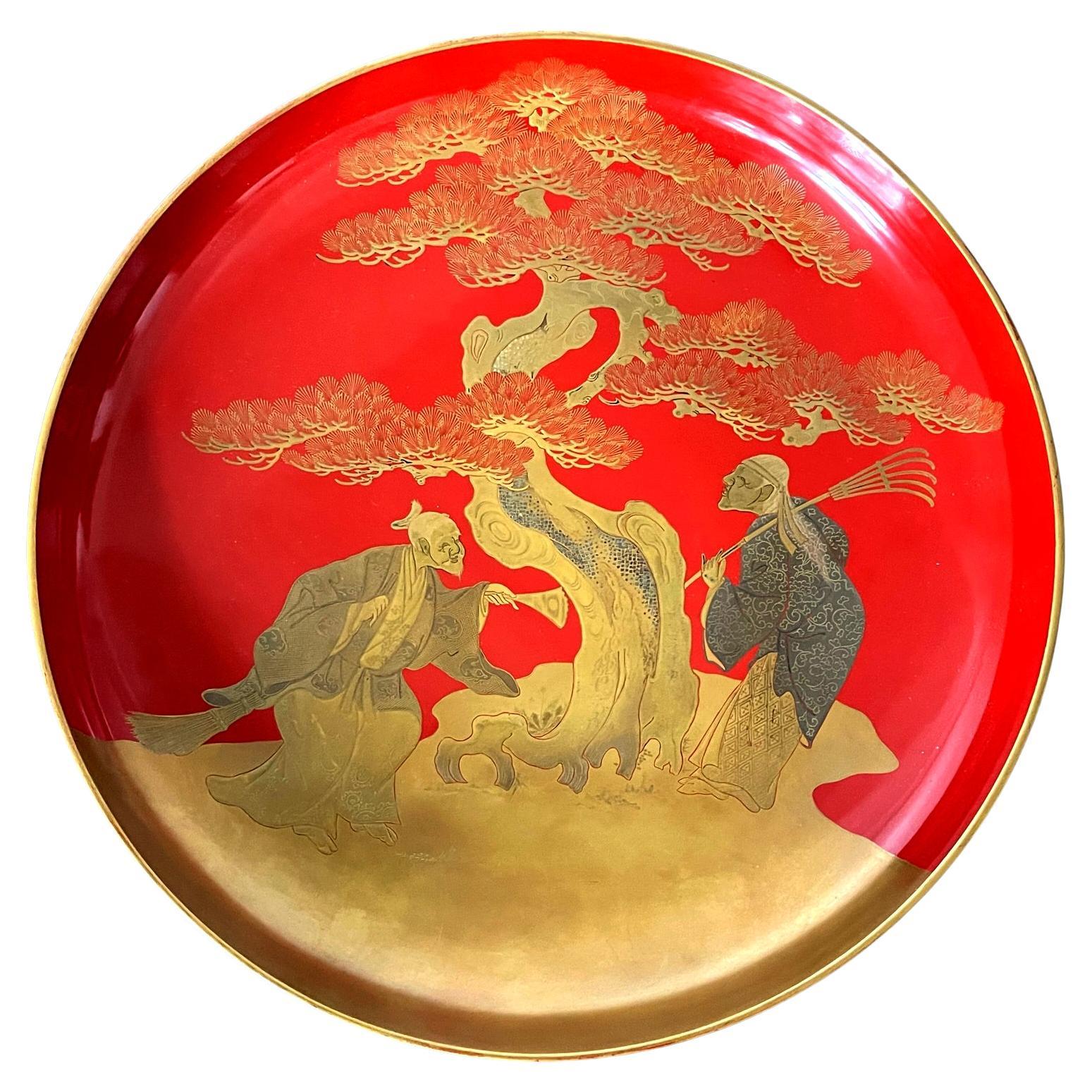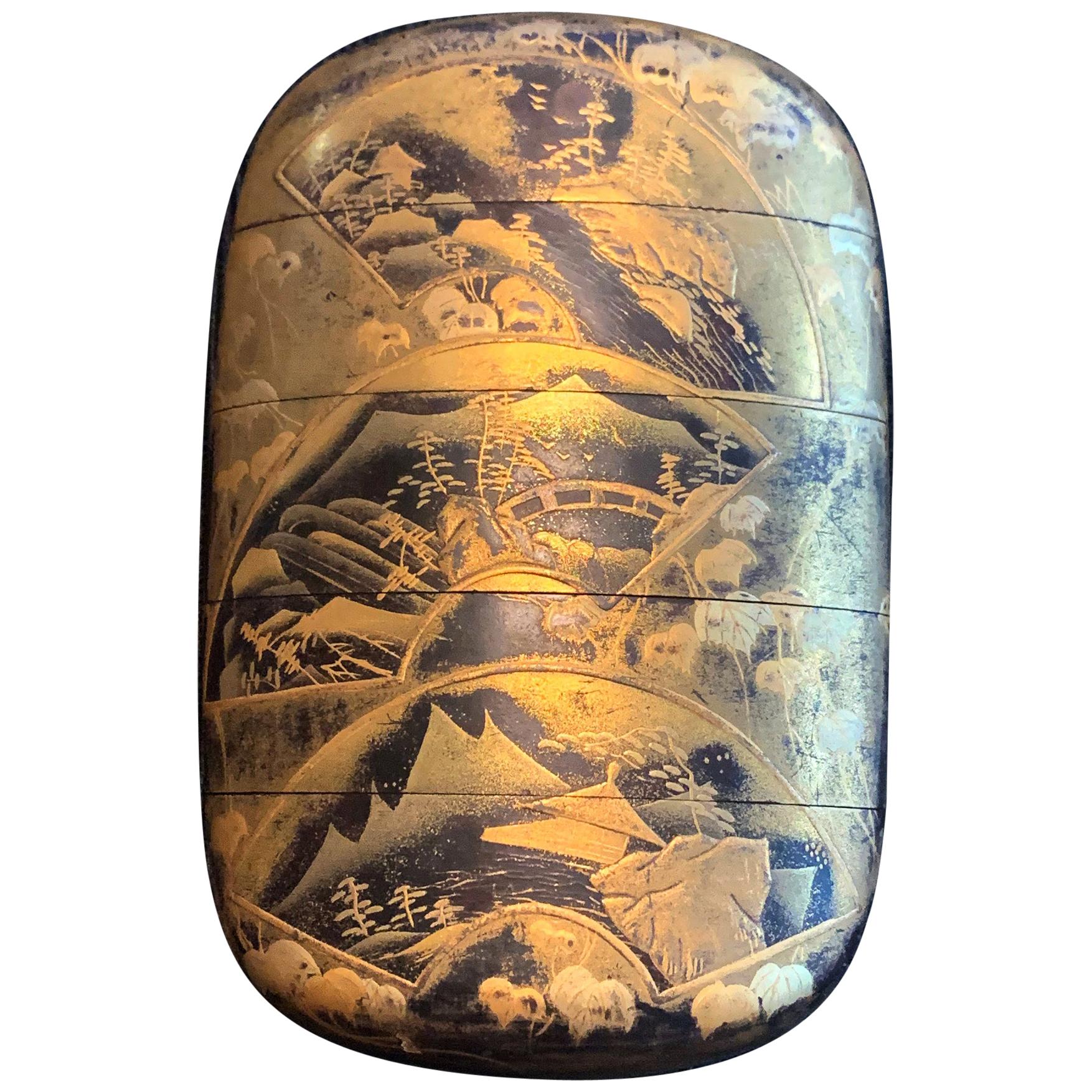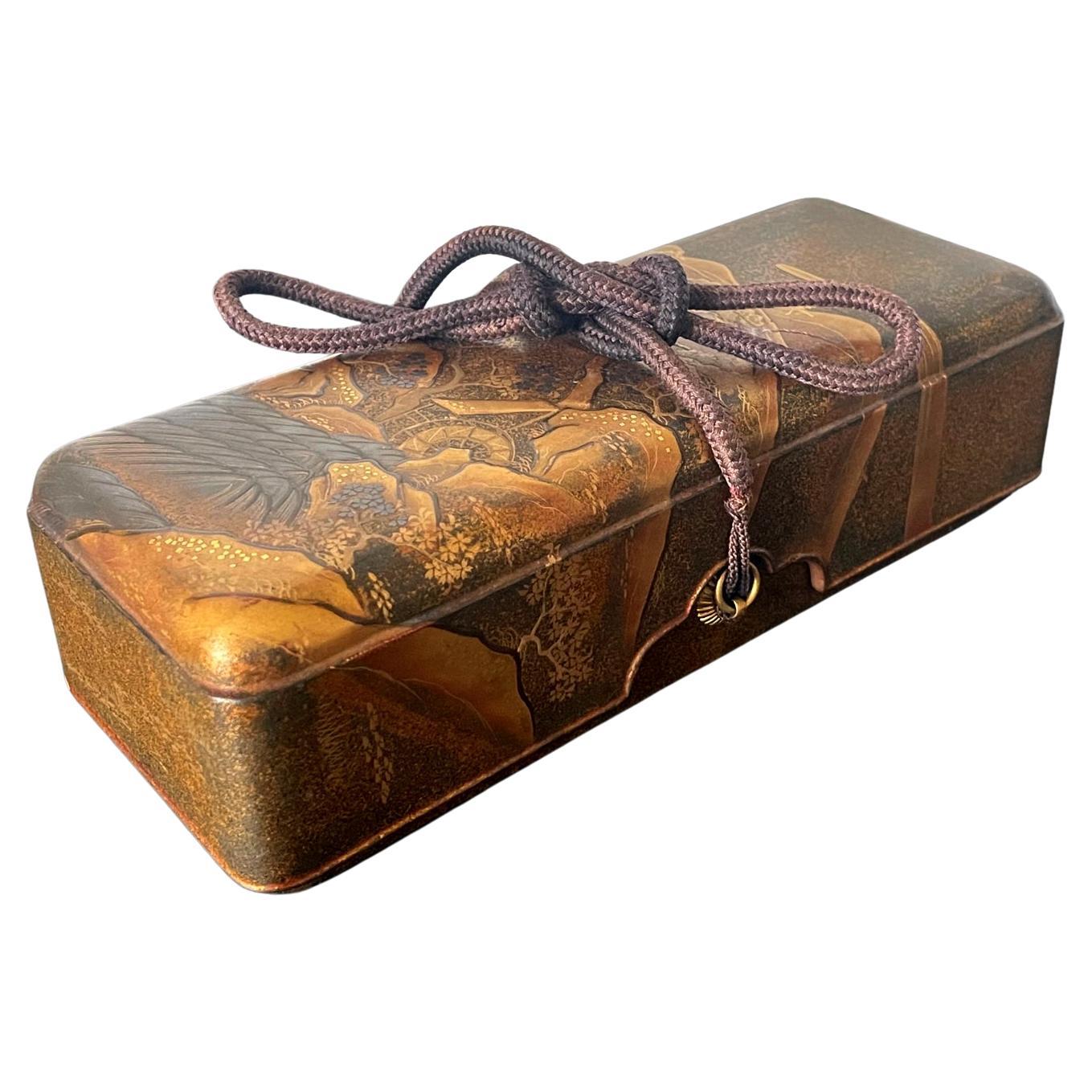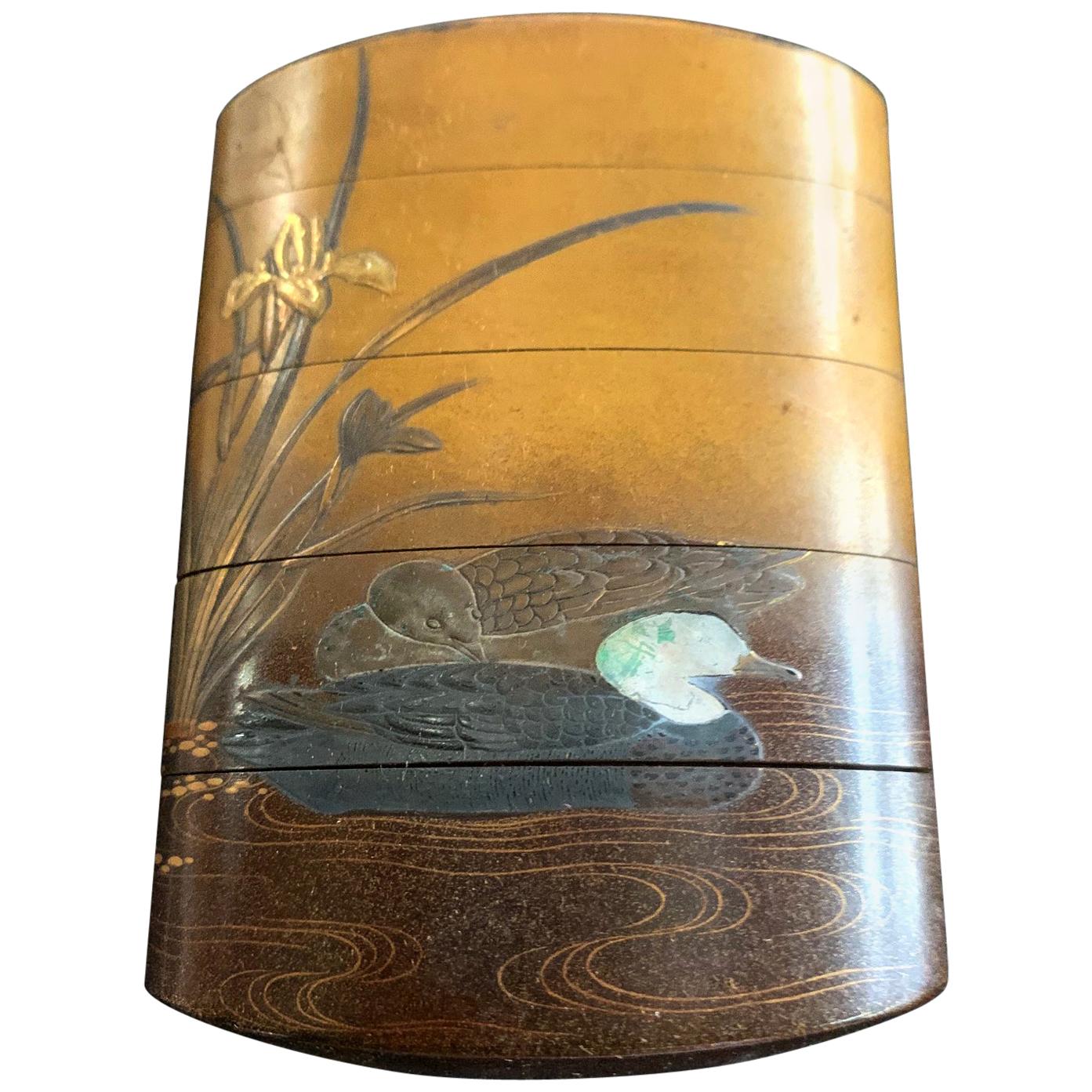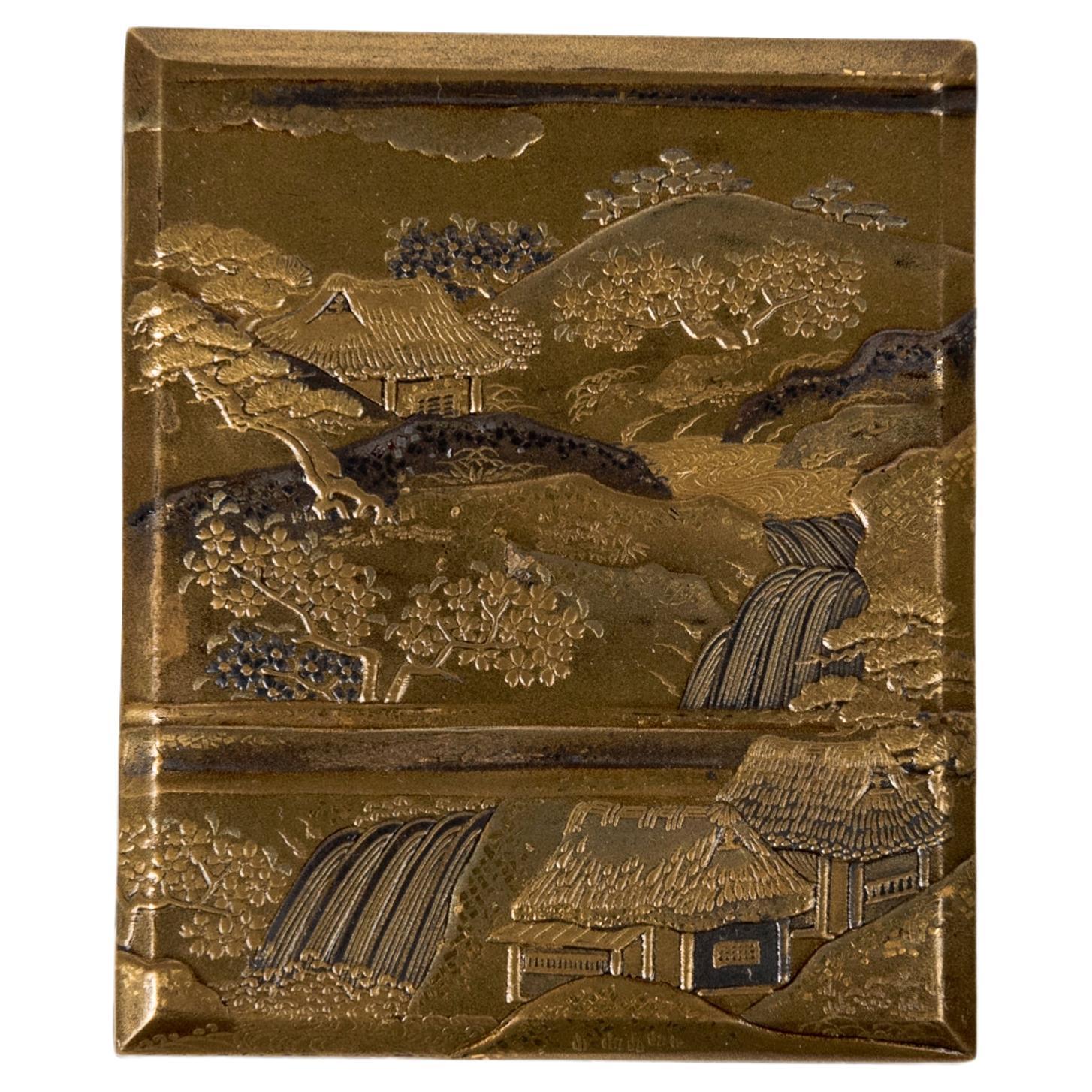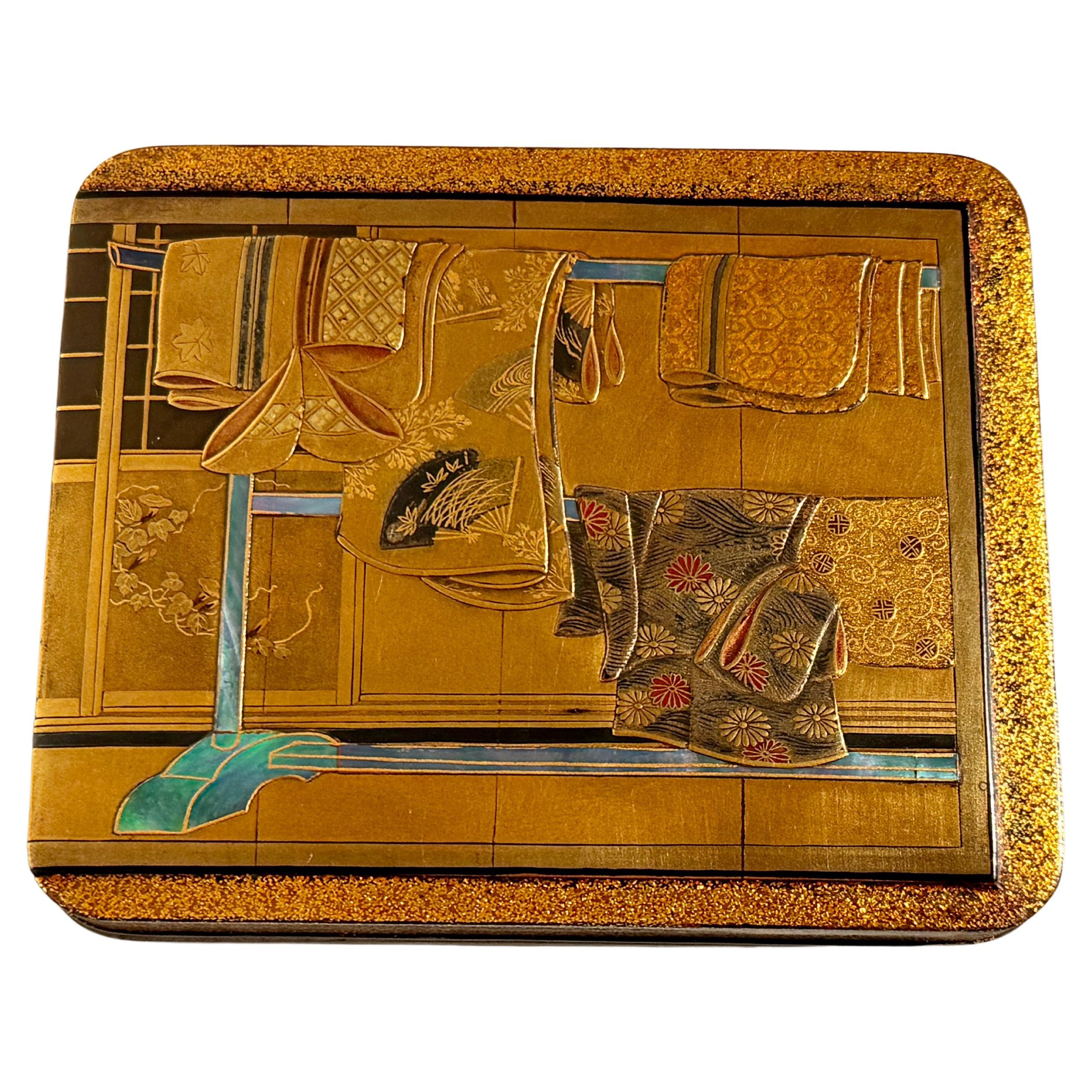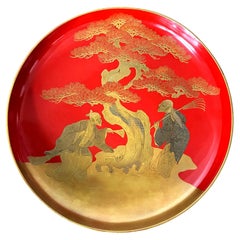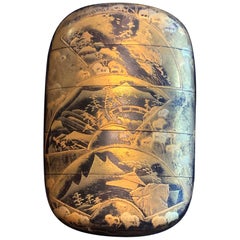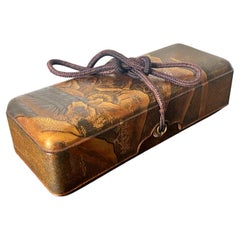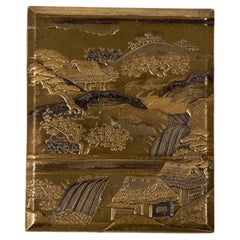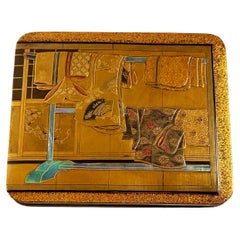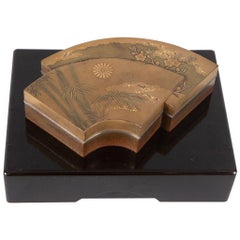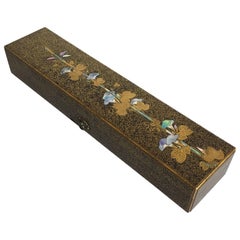Items Similar to Exquisite Japanese Lacquer Maki-e Suzuribako by Koma Kyūhaku Edo Period
Want more images or videos?
Request additional images or videos from the seller
1 of 16
Exquisite Japanese Lacquer Maki-e Suzuribako by Koma Kyūhaku Edo Period
$18,000
£13,761.96
€15,851
CA$25,223.52
A$28,159.69
CHF 14,755.25
MX$344,702.21
NOK 187,391.85
SEK 176,686.73
DKK 118,297.61
Shipping
Retrieving quote...The 1stDibs Promise:
Authenticity Guarantee,
Money-Back Guarantee,
24-Hour Cancellation
About the Item
One of the finest Japanese Maki-e Suzuribakos (ink box) we have on offer, the roiro color box showcases an ambient nocturnal scene in which two shakudo inlaid crows perched on the handrails of a bridge (possible the Uji Bridge outside of Kyoto) under a cloudy night sky. The ambience continues to the interior under the lid, where a half-hidden silver moon casts a faint shadow over the water, with the banks reinforced by jakago (bamboo baskets filled with stones) highlighted by Radan shell inlays shimmering in the darkness. This imagery may allude to the opening line of a famous Tang Dynasty pome by ZhangXu: The moon is setting among the cries of the crows; the night is covered with autumn frost.
The base of the interior features a raised platform and a frame containing a suzuri (ink stone) with gold fundame rims) and a silver suiteki (water dropper) of in the complementary form of a waterwheel and waves. Under the inkstone, there is signature "Koma Kyuhaku" in gold Maki-e Kanji. Koma Family is a dynasties of lacquer artists started in the 17th century by Kyui I and continues to the beginning of the 19th century. In the eighteenth century, there were six Kyuhaku over the generations that used the same name with the last one Kyuhaku VI died in 1806. It is therefore difficult to know exactly when the piece was made or by whom. It was likely made in 18th century during Edo period.
With a kabusebuta (overhanging lid) and scalloped sumikiri (cut-off corners), the exquisite suzuribako strikes one with its moodiness and delicate but sure-handed composition. The wide range of decorative techniques, including gold hiramaki-e, takamaki-e, and togidashi maki-e with hirame flakes, shakudo, and radan inlays, were used harmoniously and cohesively to achieve the aesthetic vision.
There is a tomobako box in black-painted wood accompanies the suzuribako. It remains a collector's paper sticker with ink Kanji note: "Maki-e Ink box; Bird over bridge, seeing the half-hidden moon from afar. Made by Koma Kyuhaku".
- Dimensions:Height: 2 in (5.08 cm)Width: 9.25 in (23.5 cm)Depth: 10.125 in (25.72 cm)
- Style:Japonisme (Of the Period)
- Materials and Techniques:
- Place of Origin:
- Period:
- Date of Manufacture:Late 18th-Early 19th Century
- Condition:Wear consistent with age and use. Overall fine and attractive condition with some age-related wear and patina. Minute areas of loss on the relief end of the bridge banisters. Base shows contact minor contact wear. The tomobako box shows wear.
- Seller Location:Atlanta, GA
- Reference Number:1stDibs: LU945030766252
About the Seller
4.9
Platinum Seller
Premium sellers with a 4.7+ rating and 24-hour response times
Established in 2006
1stDibs seller since 2010
564 sales on 1stDibs
Typical response time: <1 hour
- ShippingRetrieving quote...Shipping from: Atlanta, GA
- Return Policy
Authenticity Guarantee
In the unlikely event there’s an issue with an item’s authenticity, contact us within 1 year for a full refund. DetailsMoney-Back Guarantee
If your item is not as described, is damaged in transit, or does not arrive, contact us within 7 days for a full refund. Details24-Hour Cancellation
You have a 24-hour grace period in which to reconsider your purchase, with no questions asked.Vetted Professional Sellers
Our world-class sellers must adhere to strict standards for service and quality, maintaining the integrity of our listings.Price-Match Guarantee
If you find that a seller listed the same item for a lower price elsewhere, we’ll match it.Trusted Global Delivery
Our best-in-class carrier network provides specialized shipping options worldwide, including custom delivery.More From This Seller
View AllJapanese Lacquer Maki-e Plate of Takasago Story
Located in Atlanta, GA
A large circular plate with a short stem base in Vermillion lacquer color from Late Meiji Period circa end of 19th century to early 20th century. ...
Category
Antique 19th Century Japanese Meiji Lacquer
Materials
Lacquer
Fine Japanese Lacquered Inro by Yutokusai
Located in Atlanta, GA
A four-case lacquered Japanese inro by Yutokusai (Gyokkei), a lacquer artist active from 1845-1900 (end of Edo to Meiji period). The slightly round inro features a very intricate design with three unfolded fans on the front and two on the back: each reveals a vignette landscape scenery, likely real places in Japan. Using a combination of hiramaki-e and slight takamaki-e, the artist deftly created the pictures with fine details, rendering the inro as a miniature artwork...
Category
Antique 19th Century Japanese Japonisme Lacquer
Materials
Wood, Lacquer
Japanese Lacquered Maki-e Fubako Edo Period
Located in Atlanta, GA
A Japanese lacquered wood fubako (a box used to store document or small scroll painting), circa second half of 19th century late Edo period. The rectangular box features an unusually deep lipped lid with slightly rounded corners, a conforming lower box that is almost entirely covered by the lid which has two bronze medallion rings with tasseled...
Category
Antique 19th Century Japanese Edo Lacquer
Materials
Wood, Lacquer
Japanese Inro by Koma Koryu Edo Period
Located in Atlanta, GA
A four-case lacquered inro by Koma Koryu circa 19th century late Edo period. The inro features a pair of Chinese mandarin duck resting under a bundle of blooming irises on the pond. ...
Category
Antique 19th Century Japanese Japonisme Lacquer
Materials
Wood, Lacquer
Japanese Lacquered Maki-E Fubako in Kodaiji Style
Located in Atlanta, GA
A rare Japanese lacquered wood fubako decorated in Kodaiji maki-e style circa early 17th century the beginning of the Edo period, possibly early toward the end of the Azuchi-Momoyama period. The rectangular, long and slim box features a deep lipped lid with slightly rounded corners, a conforming lower box with two bronze medallion rings with tasseled...
Category
Antique Early 17th Century Japanese Edo Lacquer
Materials
Wood, Lacquer
Antique Japanese Inro by Shigehide Edo Period
Located in Atlanta, GA
This exquisite four-case lacquered inro was dated to the latter part of 18th century to early 19th century (Edo period) and made by Shigehide. The opposite sides of the inro together features a lavish flower arrangement in a bamboo basket (ikebana). The detailed craftmanship was a true pleasure to behold. Mostly Takamaki-e (high relief) were used to texturize the delicate petals of the chrysanthemums, on which different shades of gold were used to create contrast. Raden (mother of pearl) shells were also used to highlight some leaves, rendering the piece an interesting balance of color and material. The interior was completed in a mottled gold finish. It was signed Shigehide on the bottom with a Kao. There is a small carved rabbit ojime bead...
Category
Antique Late 18th Century Japanese Japonisme Lacquer
Materials
Wood, Lacquer
You May Also Like
Japan lake landscape kobako box lacquer - Edo
Located in PARIS, FR
Rectangular kobako box in takamaki-e and kirigane gold lacquer circled with pewter depicting a lake landscape. Inside and back of the box in nashi-ji lacquer.
Japan – Edo period (16...
Category
Antique 18th Century Japanese Lacquer
Materials
Gold
Japanese Tagasode (Whose Sleeves?) Lacquer Incense Box, Kobako, Meiji Period
Located in Austin, TX
A fine and unusual Japanese lacquer box for incense accessories, kobako, featuring a tagasode (whose sleeves?) design, Meiji Period, circa 1900, Japan.
The exquisite box of simple rectangular shape worked in maki-e lacquer, taka-maki-e, and raden, all against a lush ground of gold nashiji. Fitted with silver rims.
The main decorative element of the box depicts a six panel folding screen, byobu, showing an interior scene with kimono strewn over a rack, a motif known as tagasode (whose sleeves), all in raised taka-maki-e lacquer and inlaid raden.
The screen depicts an intimate room with tatami mats on the floor and sliding shoji doors in the background. The foreground depicts a large clothing...
Category
Antique Early 1900s Japanese Meiji Lacquer
Materials
Silver
Japanese Lacquer Kogo 'Incense Box'
Located in Hudson, NY
Late Edo (1614 - 1868) period incense storage box in stacked, double fan design. Fans have bamboo and plum design with a chrysanthemum crest. Silve...
Category
Antique Mid-19th Century Japanese Edo Lacquer
Materials
Gold
Japanese Edo Period Igarashi School Long Lacquer Box, Tanzaku-Bako
Located in Austin, TX
A stunning Japanese Edo period lacquer tanzakubako, box for poem cards, late 18th-early 19th century, Edo Period, Japan.
Attributed to the Igarashi School, this box is masterfully ...
Category
Antique Early 19th Century Japanese Edo Lacquer
Materials
Mother-of-Pearl, Lacquer
Japanese Maki-e Lacquer Document Box, Edo Period, early 19th Century, Japan
Located in Austin, TX
A spectacular Japanese maki-e lacquer lidded box, possibly a writing box, suzuribako, decorated with images of folding fans, ogi, Edo Period, earl...
Category
Antique Early 19th Century Japanese Edo Lacquer
Materials
Coral
large lacquer plate
Located in VILLENEUVE-LÈS-AVIGNON, FR
Large wooden and red/gold lacquer plate
Edo Period (1603-1868) Japan
Category
Early 20th Century Japanese Edo Lacquer
Materials
Wood, Lacquer
$2,067
More Ways To Browse
Black Gold Lacquer
Japanese Stone Art
Dior Asia
Black Lacquer Inlay
Bamboo Black Lacquered
Antique Shell Inlay
Antique Japanese Stone
Edo Frames
Japanese Metal Box
Antique Ink Stone
Japanese Gold Lacquer Box
Japanese Shell Art
Japanese Wood Inlay
Japanese Antique Wood Birds
Asian Art Bamboo Frame
Antique Crow
18th Century Japanned Box
Black Lacquer Basket
